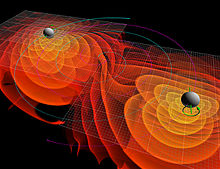2017/03/03: Dr. Stuart Jefferies of Georgia State University (GSU) recently led a multi-institutional project to open Antarctica’s new solar observatory, where EDT’s VisionLink-series products connect the above-ground telescope cameras to an underground lab for image capture.
The South Pole Solar Observatory, located near the U.S. Amundsen-Scott South Pole Station, uses EDT VisionLink XF fiber-optic extenders to connect above-ground Camera Link cameras (Teledyne-Dalsa Falcon 2, 76 MHz, 80-bit) on the telescopes to EDT VisionLink F4 frame grabbers in an underground lab.
With the demanding Antarctic environment and need for uninterrupted acquisition throughout the two-month duration of the project, EDT delivered.
“All of our EDT equipment worked flawlessly,” reported Bill Giebink, an engineer with the Institute for Astronomy at the University of Hawaii.

In early 2017 a team led by Dr. Stuart Jefferies, a professor in GSU’s Department of Physics and Astronomy, completed a project to open the South Pole Solar Observatory for recording high-resolution solar images.
In an online article, GSU reports that the project is designed to log solar images every five seconds, and that the goals are to “measure and characterize internal gravity waves omnipresent in the Sun’s atmosphere, identify the role of these waves in transporting energy and momentum, and use the properties of these waves to provide a mapping of the structure and dynamics of the Sun’s atmosphere.”
Other uses for the data, the article adds, include “studying the triggers of space weather events (solar flares and coronal mass ejections) that have direct societal impact, mapping of the Sun’s sub-surface structure and dynamics, and investigating the solar coronal heating enigma, a long-standing puzzle of why the temperature of the Sun’s atmosphere rises from about 6,000 degrees at its visible surface (the photosphere) to a few million degrees in its outer atmosphere (the corona).”
The completed installation project, sponsored by the National Science Foundation’s Division of Polar Programs, consisted of scientists from Georgia State, the NASA Jet Propulsion Laboratory, the University of Rome Tor Vergata, the University of Hawaii, and the European Space Agency.
Photo and source information (used with permission) are drawn from the Georgia State University article at: https://m.phys.org/news/2016-11-georgia-state-south-pole-solar.html



